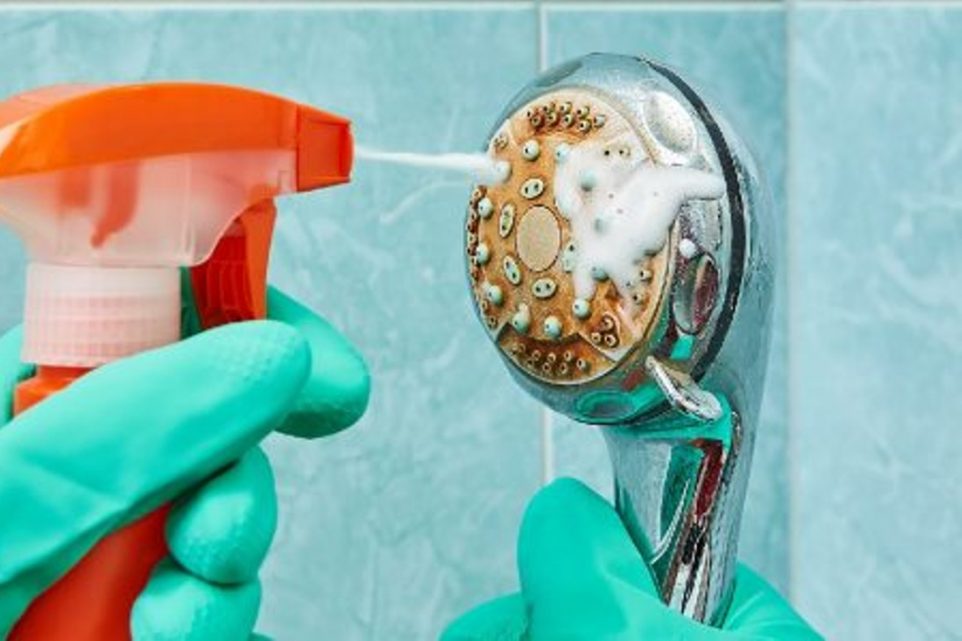Tips for Cleaning and Preventing the Growth of Black Mold in Shower

If you’re seeing black spots in your shower, it could be black mold. Black mold is a fungus that can grow in your bathroom due to excess humidity and moisture and can become dangerous if not taken care of properly. In this article, we’ll discuss what causes black mold in the shower, how to identify it, and most importantly, the steps for removing and preventing it.
It’s critical to take action as soon as you spot black mold. Black mold can cause serious health issues such as breathing problems, skin and eye irritation, and more. This guide will teach you to identify black mold, clean it up, and keep your shower clean and safe for your whole family.
What Is Black Mold?
Black mold is a form of fungi that can grow in moist and damp places like showers. It typically appears as a black, green, grey, or white fuzzy growth. Several types of black mold vary in appearance and level of toxicity.
Types of Black Mold
Stachybotrys chartarum, also known as toxic black mold, has a slimy feel and grows on moist surfaces. It releases minute particles called microcystins which can cause eye irritation and skin rashes. Fusarium, a pinkish-white variety of black mold, is the second most common type in showers. You can find this variety near the corner where two surfaces meet, such as within tiles or around caulking. Plectosporium is another type of toxic black mold that is more commonly found outdoors but can still be found in showers if there is a moisture problem.
Health Effects
The primary health risk from any type of black mold is an allergic reaction causing sneezing, coughing, and skin irritation. People with asthma and allergies are particularly susceptible to the health effects of black mold exposure. Long-term exposure to toxic molds may lead to more serious respiratory diseases, such as chronic sinusitis or bronchitis.
Cleaning and Removing Black Mold From Showers
Look for signs of water damage or discoloration on grout lines and tiles, especially in corners or other places where moisture collects. If this occurs, black mold is likely present.
Before removing the mold, wearing protective gear, including gloves, goggles, and face masks, is crucial. This gear will help prevent you from inhaling spores from the black mold while cleaning. Use a brush and a cleaner or detergent to scrub off the infected area until all visible signs of mold are gone. When cleaning is complete, wipe down the space with a dampened cloth to remove any leftover residue or spores.
Prevention Tips
Inspect the shower for any signs of water damage caused by leaking pipes or clogged drains. Seal off all surface areas so no water leaks during showers. Regularly check the bathroom for high humidity levels and take steps to reduce it, if necessary, through open windows or ventilation fans.
Install proper ventilation systems such as exhaust fans or dehumidifiers to help keep the moisture levels down in the room while also helping keep air circulation fresh throughout your home. After showering, make it a practice to clean all surfaces, such as walls, floors, showerheads, and shower doors, with an electric scrub brush and a cleaner or detergent.
When replacing any fixtures in your shower space, choose materials made from mildew-resistant products such as epoxy grout and silicone caulk, which help make it more difficult for black mold to form and spread inside shower areas. Inspect the shower regularly for signs of water damage caused by leaking pipes or clogged drains which can allow moisture buildup conducive to black mold growth. If any leaks are present, ensure they are fixed immediately by a professional plumber, and keep drains free from any accumulated debris that may impede proper drainage when taking regular showers.
Regularly inspect all surfaces around your bathroom for any signs of discoloration or leaks that may signal an underlying issue of moisture buildup conducive to black mold growth. If anything suspicious arises, immediately do another thorough inspection with protective gear and clean the affected areas with an electric scrub brush.
Conclusion
Black mold can cause serious health issues if left untreated. Knowing what to look for, how to identify it, and the steps to remove and prevent it can help keep you and your family safe. This article discussed what causes black mold in the shower, how to identify it, and the steps for cleaning and preventing it. Following the tips in this article, you can keep your bathroom clean, safe, and free of black mold.
Decades of Combined Expertise
Best Buy Guidebook is a culmination of online publishing lessons learned. From SEO to paid ads, our team has experienced the highest of highs and the lowest of lows. Our goal now is simple: Arm readers with the most information possible.
